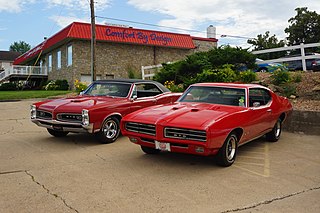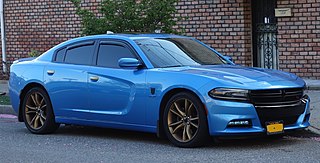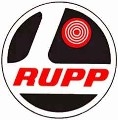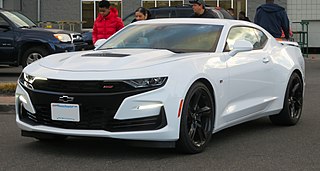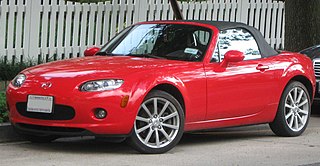Fitch Sprint Options
Options are broken down approximately by year introduced, but be aware that there is some overlap across years. Fitch produced these parts over approximately a ten-year period from 1961 to 1971 until he sold all rights, parts and toolings to Art Hershberger of Solar Automotive. So any year Corvair could have any of the following options that were not early or late model specific.
Notable exceptions:
Full width stone guard Early models only
Black vinyl top Early models only
Chrome bow at top of back window Early models only
Masked rear window Early models only
S P R I N T letters Early models only
Custom rear coil springs providing 2 deg. neg. camber Early models only
Matching colored vinyl covered glove box door Early models only
Hydraulic steering damper (Mercedes type) Early models only
SPRINT by Fitch emblem (large) Not used on late venttops
Sprint fastback 904 venttop Late models only
Aeon rubber spring bumper blocks Late model only
Hydraulic steering damper (Delco Stingray type) Late models only
First generation Early model Sprints 1962-1964
4 carburetor w/specially tuned engine: 145 bhp, was 102bhp. Cylinder heads were reworked to add one carb pad per head to produce a four carburetor setup.
Four individual small air breathers: Replaces stock setup with altered crankcase breather hose re-routed into single aircleaners.
Full width stone guard: Chrome plated wire mesh screen hinged at bumper, 2 piece split vertical at center of car.
Black vinyl top: Attractive black textured material giving padded appearance.
Chrome bow at top of back window: Provides a modified notch effect
Masked rear window: For appearance and to reduce headlight glare (used same material that was used on top of car and covered part of the back glass) reduces rear window to 18 wide x 12 high.
Radson tachometer: Tachometer mounts underneath cowl, partially blocking the lower speeds on regular instrument cluster, or on top of dash by ashtray. When used with Spyder dash, Radson tachometer replaces stock tachometer.
Optional Spyder dash w/Radson tachometer: Offered on non-turbocharged cars.
Racing stripes: Run down front fender seams, half on trunk lid and half on fender top for the driver to use as visual reference of lateral movement between car and road, and rear stripes placed inboard of rear fender seams and on engine lid.
Tuned length dual muffler: Trombone shape glass pack style mufflers provide enough length for mellow exhaust sound with a free flowing exhaust. Also known as exhaust extractors.
Lucas Flamethrower: 1/4 mile pencil beam high beam light replaced left side high beam.
S P R I N T letters: Located on dashboard and front trunk lid in chrome.
Wood rimmed steering wheel: Provides a better grip due to thicker ring, with a better dish than stock with SPRINT horn button emblem mounted in stock 62 Monza horn ring cap. Several different styles of wood wheels have been available through Fitch over the years.
Tall drivers seat bracket: Allows drivers with long legs to sit comfortably, or to allow the passenger to stretch their legs.
Adjustable heavy duty shocks: 4 adjustable shocks replace factory shocks and improve handling.
Grab rail: Chrome grab rail mounts under glove box for passenger comfort and stability (TR3 part).
Indicaps: Replaces valve stem caps. Preset to tire pressures 18, 20, 26, 28, or 30 lb.
Leather, mahogany, or matching colored vinyl covered glove box door, radio face plate, and lower instrument panel cover: (if Spyder dash is not ordered) Reduces possibility of glare and improves finish of interior by matching steering wheel or interior.
Dark vinyl covering: On radio faceplate and glovebox door with grab rail option.
Fast ratio steering arms: 3 turns lock-to-lock (without reducing turning radius). Stock steering arms are modified by cutting and rewelding into shortened arms. The arms are then magnafluxed.
Fold down rear seat and rear luggage deck compartment carpet: Improves appearance and helps prevent luggage from sliding around.
Gear shift boot (black): Replaces stock shift boot when quick shift kit is used.
Seat tilt mechanism: This will allow passenger to sleep or rest.
Adjustable headrests: Round headrests that attach to seat backs via thumbscrews and brackets. Available for driver side & passenger side.
Short throw gearshift assembly: Reduces shift travel to give a sportscar-like feel.
Michelin X tires: Exchanged for factory tires.
Blaupunkt AM-FM radio: Installed in place of stock AM radio.
Custom rear coil springs providing 2 deg. neg. camber: Provided at rear wheels by Fitch custom rear coil springs with a higher spring rate and shorter height.
Hydraulic steering damper: (Mercedes type) to eliminate road shock.
Stage II engine: Uses 2-carburetor engine and raises HP by adding the Sprint exhaust, air cleaners, and special tuning to achieve HP gain.
Judson electronic magneto: Provides for longer spark plug and point life, hotter spark, and longer mileage between routine tuning. Early precursor to an electronic ignition system.
New options added for 1963
13-inch Hands aluminum mag wheels: 4-lug, 8-slot mags w/3-prong spinner.
Heel-and-toe bracket: Attaches to accelerator pedal for proper racing style shifts (hooks on accelerator pedal and allows driver to have his toes on brake pedal and his heel on the accelerator pedal to keep engine revs up while braking and down shifting).
Headlight high beam flasher switch: Mounts to the left of wheel below the instrument panel (silver rod with black tip). Used to blink lights to signal approach where horn would not be heard because of distance and speed (long shaft is late, short shaft is early).
New options added for 1964
4-carburetor specially tuned engine: 155 bhp was 110bhp. Cylinder heads were reworked to add one carb pad per head to produce a four carburetor setup.
Fitch metallic lined brake shoes: Reduces fade, improves braking.
Pirelli tires: Replaces factory tires and now used instead of Michelin X.
Brazilian rosewood gear shift knob: Attractive rosewood shift knob with three dimensional embossed Sprint checkerboard insignia.
Racing stripe: Stripe continues down trunk lid and fills entire area between headlights. Stripes are also painted inside trunk lid gasket area.
Wood rimmed steering wheel: Provides a better grip due to thicker rim, with a better dish than stock. With SPRINT horn button, now uses 1963 "700" style horn button with sprint insert. Several different styles of wood wheels have been available through Fitch over the years.
SPRINT by Fitch emblem: Replaces chrome SPRINT letters on trunk and dash with SPRINT by Fitch emblems on the front fenders above and in front of the wheel well openings and on the rear body panel (C O R V A I R letters now occupy space where SPRINT was written). Uses large size SPRINT emblem with studs (SPRINT emblems were often mounted in other places on the car. The emblem replaces the Corvair script on the front panel of a 1963 Corvair).
Second generation late model Sprints 1965-1969
1965 Sprint
Four individual small air breathers: Replaces stock setup with altered crankcase breather hose re-routed into a single air cleaner (different style air cleaners were available over the years).
Sprint fastback 904 venttop: A large fiberglass roof attachment, which gives the late model Corvair coupé a fastback appearance (not available for convertible or sedan).
Pair of adjustable Gabriel shocks: Replaces stock rear shocks for better handling.
Leather wrapped steering wheel: Attractive leather steering wheel wrap often used if wood wheel option is not ordered. Can be used with wood wheel if desired.
Rear seat sound insulation: Double layer of foam insulation added under the rear seat to reduce road noise in passenger compartment.
Judson electronic magneto: Provides for longer spark plug and point life, hotter spark, and longer mileage between routine tuning. Early precursor to an electronic ignition system.
Tuned length dual muffler: Trombone shape glass pack style mufflers providing enough length for mellow exhaust sound with a free flowing exhaust. Also known as exhaust extractors.
Michelin X or Pirelli tires: Choice is offered. Exchanged for factory tires.
Fog-Cote yellow dye: Attractive painted yellow dye applied to the outboard lowbeams to work better in fog conditions.
Aeon progressive-rate auxiliary rubber spring bumpers: These mounted on the spring rebound pad in the rear and on the shock absorber stem in the front. Improves the car's handling.
Indicaps: Replaces valve stem caps. Preset to tire pressures 18, 20, 26, 28, or 30 lb.
Seat tilt mechanism: This option was not offered for late models, but may possibly be adapted to lates.
Adjustable headrests: Round headrests that attach to seat backs via thumbscrews and brackets. Available for driver side and passenger side (1966 and prior only, without factory headrests).
Blaupunkt AM-FM radio: Installed in place of stock AM radio.
Lucas Flamethrower: 1/4 mile pencil beam high beam light replaced left side high beam.
Grab rail: Mounted above glove box door sticking straight out. This contrasts with the early model which is mounted under glove box pointing down.
Fold down rear seat and rear luggage deck compartment carpet: Improves appearance and helps prevent luggage from sliding around.
Fast ratio steering arms: Three turns lock-to-lock (without reducing turning radius). Stock steering arms are modified by cutting and rewelding into shortened arms. The arms are then magnafluxed and painted blue.
Short throw gearshift assembly: Reduces shift travel to give a sportscar-like feel.
Tall drivers seat bracket: Allows drivers with long legs to sit comfortably, or to allow the passenger to stretch their legs.
Gear shift boot (black): Replaces stock shift boot when quick shift kit is used.
Hydraulic steering damper: (Delco Stingray type) To eliminate road shock.
Heel-and-toe bracket: Attaches to accelerator pedal for proper racing style shifts (hooks on accelerator pedal and allows driver to have his toes on brake pedal and his heel on the accelerator pedal to keep engine revs up while braking and down shifting).
Head light high beam flasher switch: Mounts to the right of wheel above radio (silver rod with black tip), longer than early model flasher. Used to blink lights to signal approach where horn would not be heard because of distance and speed (mounting location listed was usual location but could be placed anywhere according to owner preference).
Fitch metallic lined brake shoes: Reduces fade, improves braking.
Essential light monitor: Precision instrument protects you by monitoring your running lights and advising you if they cease to function correctly.
One-time windshield wiper switch: Switch stem at your fingertips clears the glass with one sweep.
Brazilian rosewood gear shift knob: Attractive rosewood shift knob with three dimensional embossed Sprint checkerboard insignia.
Racing stripe (painted): Stripe runs front to back along top of fender but not on front or rear hood. Optional paint to fill in entire area between headlights. Optional rear cove painted to match stripe (in acrylic lacquer). Available at John Fitch and Co. only.
Racing stripe: Available in vinyl as a kit.
Paint, top only: Hood painted black satin acrylic lacquer. Available at John Fitch and Co. only.
Paint, roof only: Roof painted black satin acrylic lacquer. Available at John Fitch and Co. only.
SPRINT by Fitch emblem (small): Replaces large SPRINT by Fitch emblems. Smaller emblem designed to fit and work correctly on new Venttop offered for late models. Larger emblem was still used on the rear hood in place of HP emblem until supplies ran out and was replaced with the small emblem (i.e. both small and large SPRINT emblems may be found on rear hood on late models). Also, smaller SPRINT emblems were used as replacements on early models.
13-inch Hands aluminum mag wheels: 5-lug, 8-slot mags w/3-prong spinner for 65 and later (few were so equipped due to the scarcity of these wheels. Fitch himself could not locate a set for his Phoenix).
- Hands wheels for earlies were not available until 1965, so Sprints built before that time were not originally equipped with these wheels. Owners opted to add these wheels later.
Tachometer: For Monza and “500” models only: (Corsas already have a tach). All transistorized and self-contained. Custom made to mount in the center hole in the Monza and “500” dash.
Wood rimmed steering wheel: Provides a better grip due to thicker rim, with a better dish than stock. With SPRINT horn button, now uses 1963 "700" style horn button with sprint insert. Several different styles of wood wheels have been available through Fitch over the years. Not available for cars with factory wood wheel or telescopic column.
1966-69 S P R I N T Added options
Koni shocks: These adjustable shocks are mounted at front and rear. An upgrade from the Gabriel shocks.
Englebert Rallye 220 steel belted radial with tubes: Exchanged for factory tires (FYI: Fitch continually upgraded the tires he offered. Fitch first offered Michelin X tires followed by Pirelli tires in 1964 and the tires listed above for the 66 and later brochures).
Forced air-ventilated bucket seat: This option was not listed in any brochure but has been seen listed in a road test of a 1966 Sprint. The test also featured a picture which clearly shows the front bucket with the ventilation holes in the front seat upholstery.
[1] [2] [3] [4]


